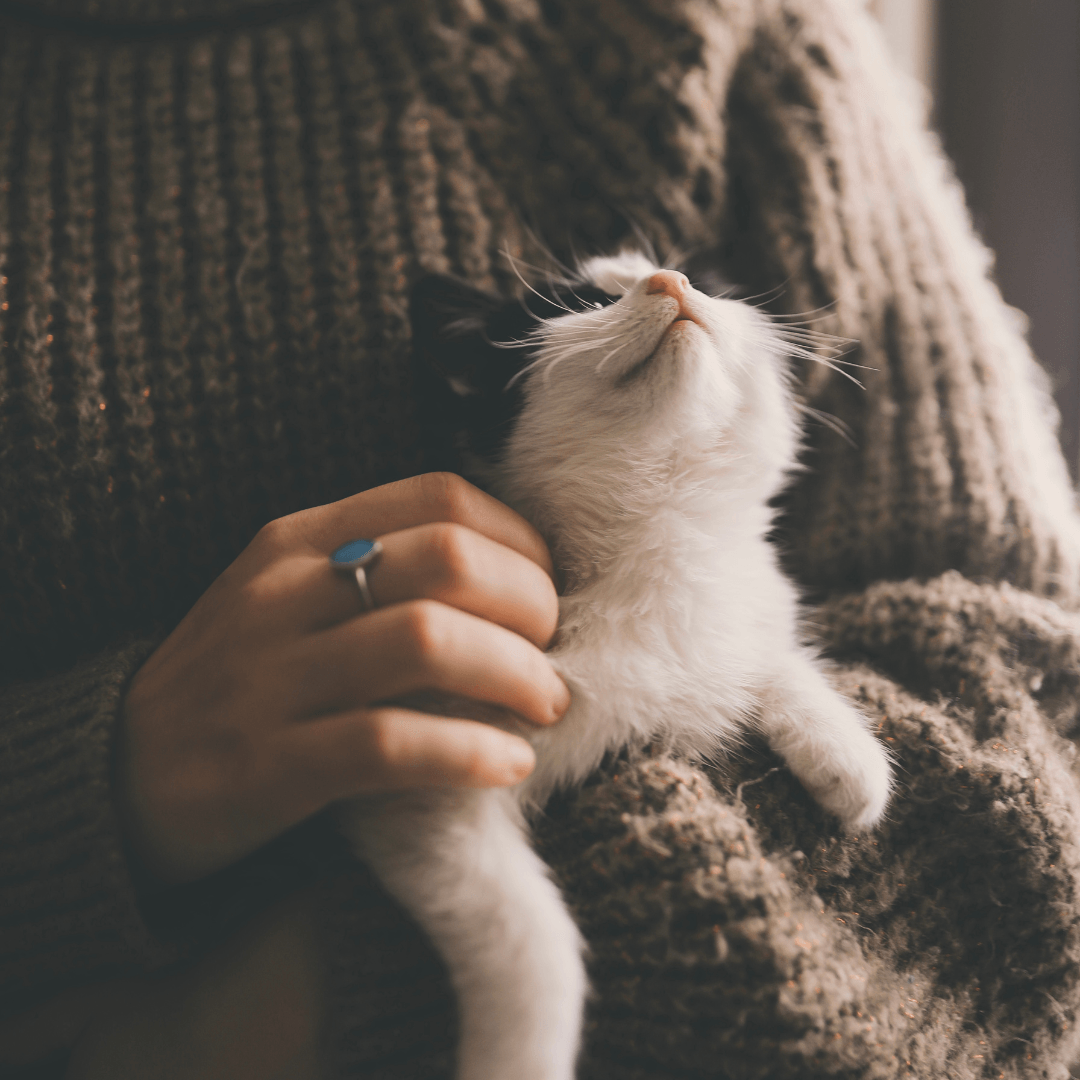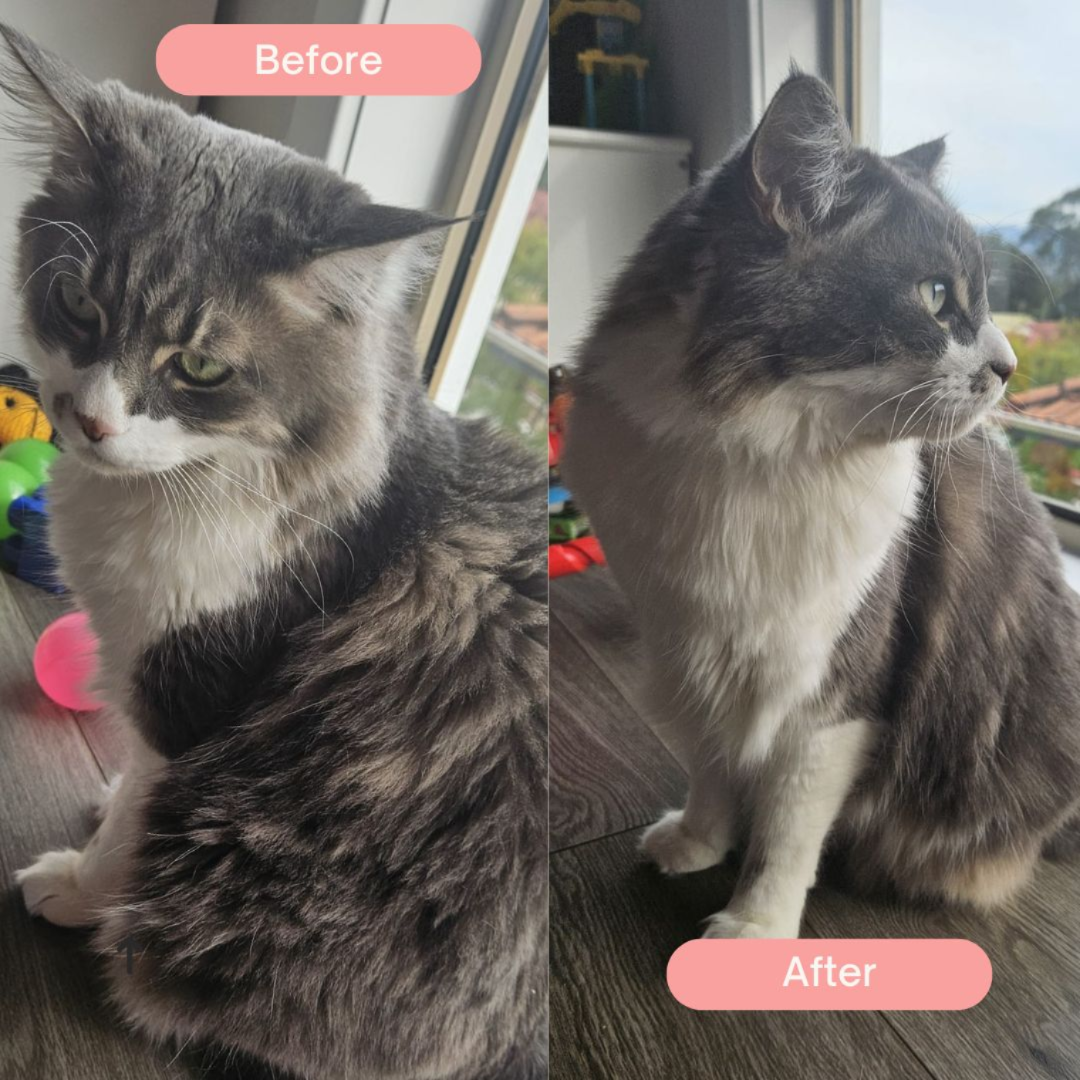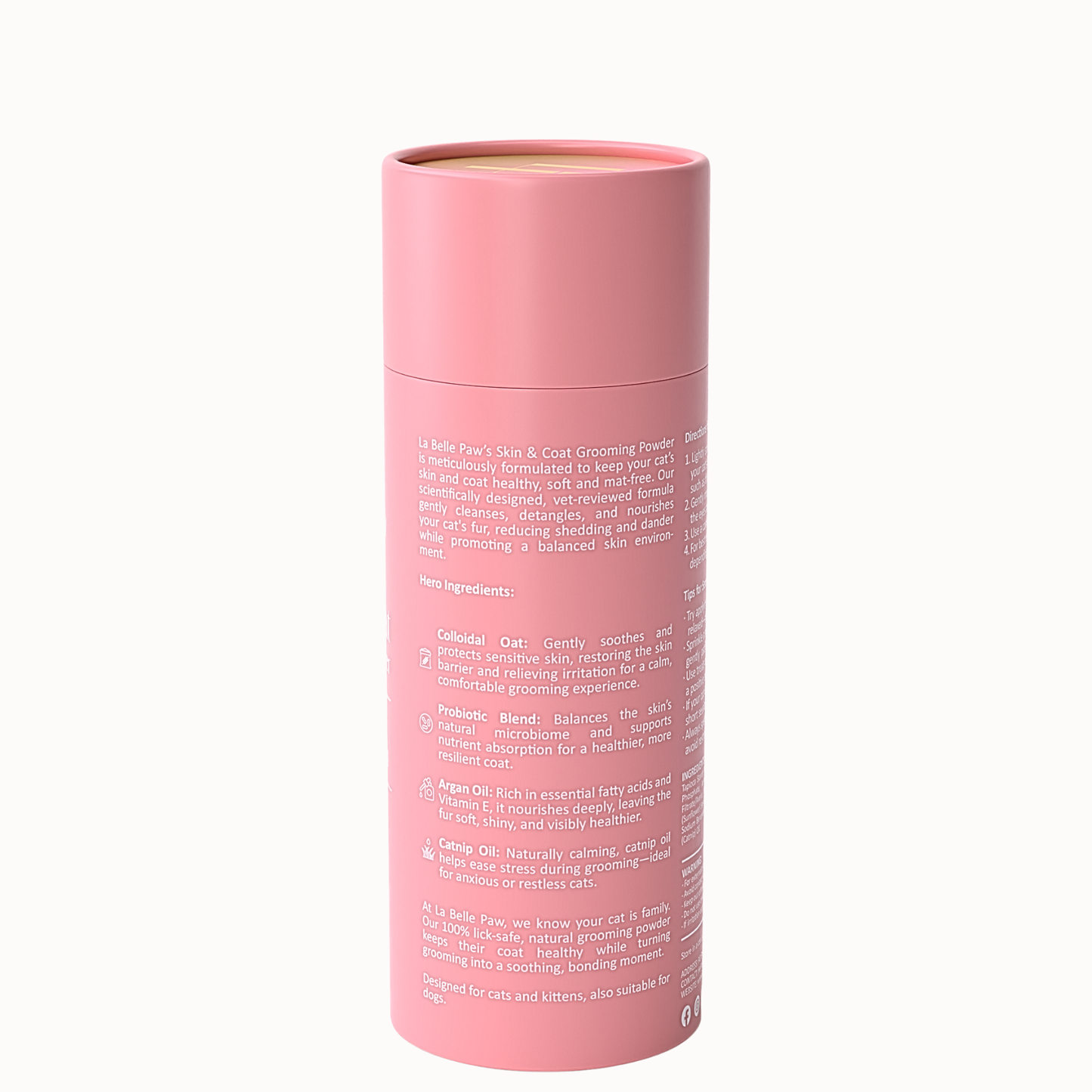
Understanding Cat Behavior During Grooming
Share
Understanding Cat Behavior During Grooming: A Guide to Stress-Free Grooming
Introduction
Grooming is an essential aspect of cat care, but it can be challenging when your feline friend resists or becomes stressed. Understanding your cat's behavior during grooming is key to making the process more comfortable for both of you. By recognizing the reasons behind your cat's resistance and learning how to address their needs with patience and positive reinforcement, you can turn grooming sessions into a positive experience.
Why Do Cats Resist Grooming?
Many cats find grooming to be an invasive process, which can trigger their natural fight-or-flight instincts. Here’s why some cats may resist:
- Discomfort with Being Handled: Cats are independent animals, and some may dislike having areas of their bodies touched, especially if they aren’t used to it. The act of grooming often involves handling sensitive areas, which can make them feel vulnerable.
- Triggering of Fight-or-Flight Response: When a cat feels restrained, it can trigger a survival instinct that makes them react defensively. Grooming may feel like being captured, leading to resistance or even aggression.
- Previous Negative Experiences: Cats that have had a bad grooming experience in the past may associate grooming with discomfort or fear, making them more likely to resist in the future.
Key Insight: Understanding the root cause of your cat’s resistance is the first step to helping them feel more comfortable during grooming. Recognizing these behaviors can help you adapt your grooming technique to better suit your cat’s needs.
Recognizing Stress Signals
Cats communicate their feelings through body language, and being able to identify signs of stress is crucial for a successful grooming session. Here’s what to look out for:
- Tail Flicking: A swishing or flicking tail can indicate agitation. If your cat’s tail is moving rapidly, they may be close to reaching their tolerance limit.
- Flattened Ears: When a cat flattens their ears, it signals that they are feeling threatened or uncomfortable.
- Dilated Pupils: Wide, dilated pupils are a sign that your cat is experiencing fear or stress.
- Vocalizations: Growling, hissing, or low meowing are signs that your cat is distressed and may become aggressive if grooming continues.
Pro Tip: If you notice any of these stress signals, stop grooming and give your cat a break. Forcing grooming when a cat is already stressed will only reinforce negative associations, making future sessions more challenging.
Using Positive Reinforcement
Positive reinforcement is a powerful tool in helping your cat develop a more relaxed attitude toward grooming. Here’s how to implement it effectively:
- Start with Short Sessions: Begin with grooming sessions that last just a few minutes. Reward your cat with treats or praise for staying calm, even if you only brush a small section of their coat.
- Gradually Increase the Duration: As your cat becomes more comfortable, gradually extend the grooming time. The goal is to increase the duration without causing stress.
- Incorporate Clicker Training: If your cat is familiar with clicker training, use it to reinforce calm behavior during grooming. Click and reward whenever your cat remains still or allows you to touch sensitive areas.
- Reward Calm Behavior: Offer a treat, gentle petting, or praise whenever your cat remains calm or cooperates. This creates a positive association with grooming and encourages better behavior over time.
Expert Advice: Always end grooming sessions on a positive note, even if the session was short. This will help your cat associate grooming with positive experiences, rather than seeing it as something to be avoided.
Techniques for Reducing Stress During Grooming
Making small adjustments to the grooming routine can help reduce stress and resistance in cats:
- Create a Calm Environment: Choose a quiet room without distractions. Play soft music or use calming sprays like Feliway to help soothe your cat.
- Let Your Cat Investigate the Tools: Before you start grooming, allow your cat to sniff and explore the grooming tools. This can help reduce fear of the unknown.
- Use the Right Tools for Your Cat’s Coat Type: Different cats require different brushes. A slicker brush works well for long-haired cats, while a rubber grooming brush is better for short-haired cats.
Common Mistakes to Avoid
- Ignoring Stress Signals: If you notice signs of stress, don’t push through. Pause the session and give your cat some time to relax.
- Rushing the Grooming Process: Take your time to ensure your cat feels safe and comfortable. Rushing can make the experience overwhelming for them.
- Using Harsh Restraints: Avoid holding your cat too tightly. Gentle handling techniques, like wrapping your cat in a towel ("kitty burrito"), can help keep them calm while preventing sudden movements.
Conclusion
Understanding cat behavior during grooming is essential to creating a stress-free experience for your feline friend. By recognizing why cats may resist grooming and using positive reinforcement techniques, you can help them develop a more relaxed attitude toward grooming sessions. Remember, patience and consistency are key to building trust and ensuring your cat’s grooming routine is a positive one.





